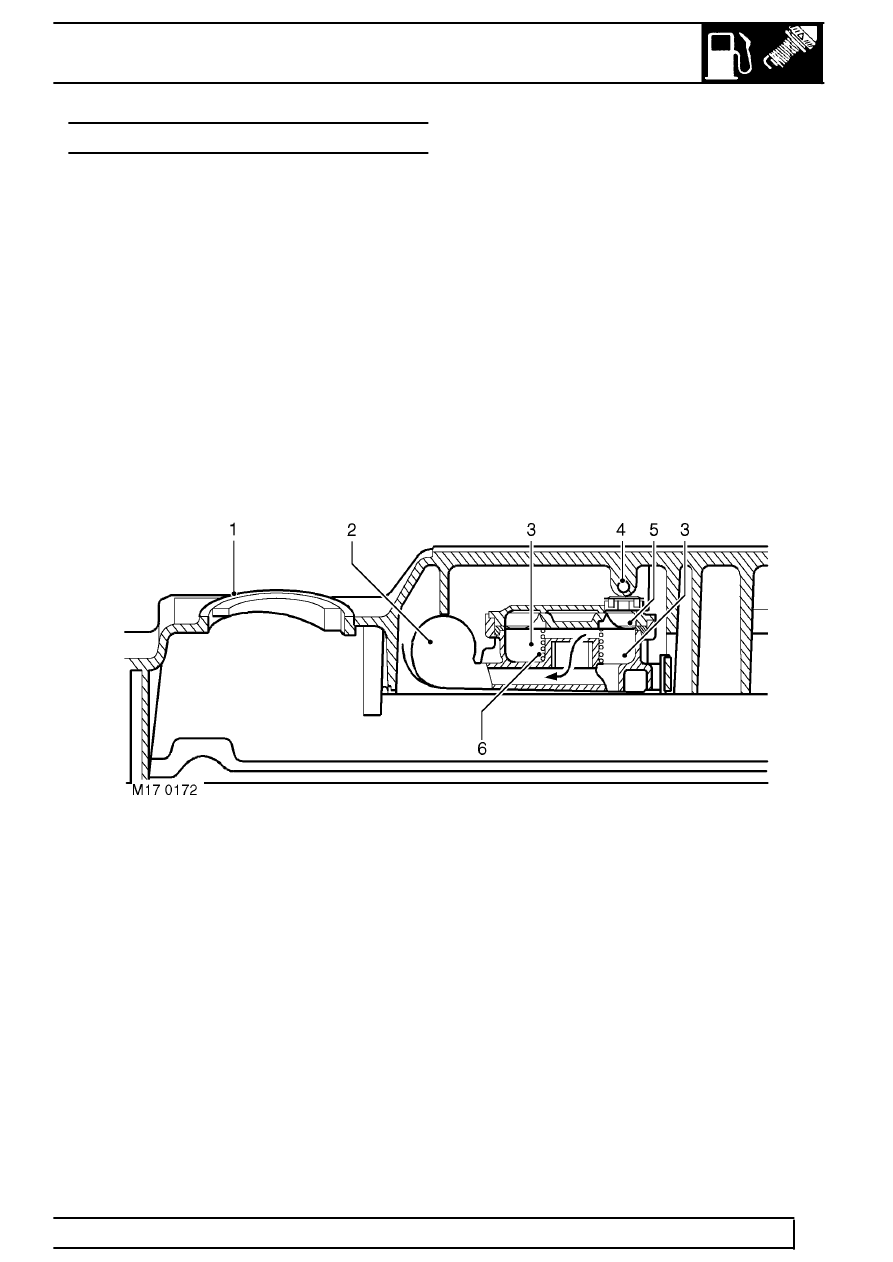Range Rover P38

EMISSION CONTROL
1
DESCRIPTION AND OPERATION
EMISSION CONTROL - BMW DIESEL
Crankcase Ventilation Control
The purpose of the crankcase ventilation system is to
ensure that any gases entering the inside of the
engine are redirected into the air intake and do not
accumulate in the engine.
Vehicles without EGR
The camshaft cover is connected via a pipe to the air
intake duct to the turbocharger. When the engine is
running, gases are drawn from the crankcase and the
camshaft cover into the air intake duct due to the
pressure difference between the air induction into the
turbocharger and the inside of the engine.
As the gases are drawn into the camshaft cover, they
pass through a wire mesh filter which separates oil
from the gases. A Mann Hummel type valve is located
in the pipe to the intake duct. The valve allows
crankcase ventilation at low engine speeds but closes
at high engine speeds to prevent excessive crankcase
depression.
Vehicles with EGR
The Mann Hummel type valve is no longer used and
the camshaft cover is fitted with a pressure regulating
valve. The valve is located in the front of the cover
and is connected by a pipe to the air intake duct. The
purpose of the regulating valve is to maintain a
constant vacuum of 20 mbar inside the engine
crankcase, improving crankcase ventilation under all
operating conditions.
1. Camshaft cover
2. Blow-by pipe
3. Internal engine pressure
4. Atmospheric vent
5. Membrane
6. Spring
The pressure regulating valve comprises a membrane
held in the open position by a spring. The membrane
and spring are subject to engine crankcase pressure
and intake manifold depression on one side and
atmospheric pressure on the other side. When
crankcase pressure rises, gases are drawn from the
engine past the open membrane and into the air
intake manifold by the intake manifold depression.
When the intake manifold depression exceeds the
crankcase pressure, the membrane moves against
the spring pressure and engine crankcase pressure.
This causes the membrane to lower and cover the
port, preventing excessive depression in the
crankcase.
